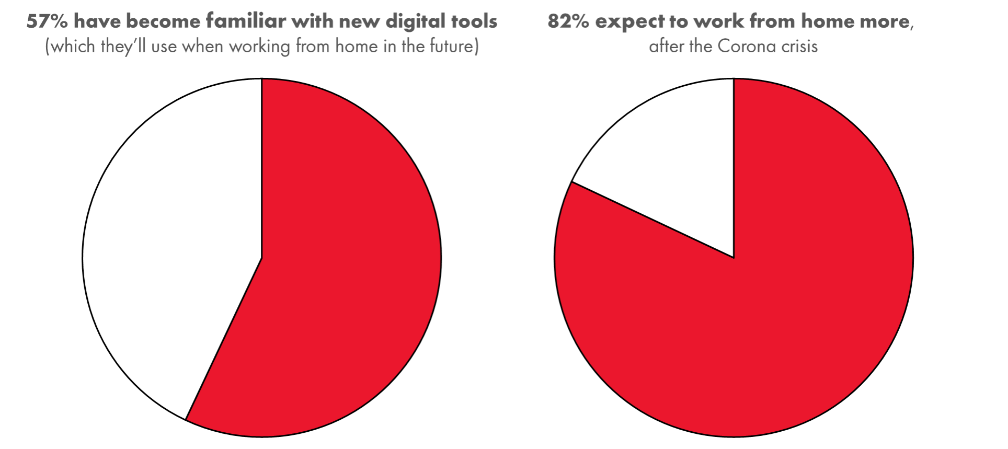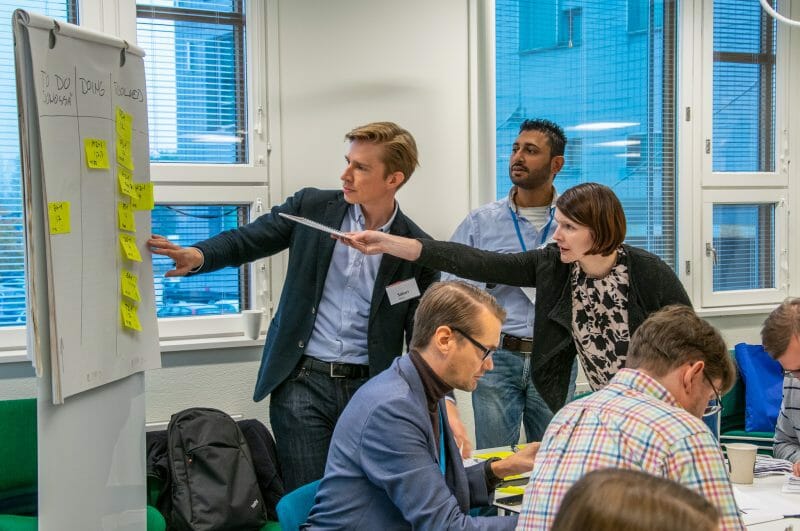Dear CIO, now is your time to drive change!
How much will we change on the other side of the corona crisis? There’s a risk we will all go back to our old ways. There’s an opportunity to learn and bring improvements with us – especially if we focus on just that; learning from a bad situation and turning that into new ways of working.
The role of the CIO is pivotal in keeping the importance of technology high on the agenda.
When we return to a sort of normality, companies will put efforts into addressing financial woes, well-being of employees, and re-ignition of sales. Important aspects and for some a matter of immediate survival.
In planning for the new reality, we find it important that the CIO drives change – and not limited to a focus on technology, it is much more about changing habits, cultures and traditions. It’s organizational change management more than technology change. It’s leadership.
Here is our take on four focus points for CIOs to propel technology as a lever for lasting change and improvement:
Focus Point 1: The scalability of cloud-based solutions saves the day!
If the remote collaboration tools were hosted on-site, we would not have been able to adapt as quickly as we have. That is a case in point, proving the value of cloud-based solutions with the ability to quickly scale up (and back down, as people return to offices).
As the coronavirus spread across the globe, country by country faced challenges on key parts of their online infrastructure. Websites and their underlying technology were not geared for the sudden demand. This happened for online retailers, for state unemployment websites, in education systems just to name a few. For some, part of the solution was to introduce queuing systems such as Queue-it to manage the amount of users getting access at any given time. The queue users joined is, naturally, cloud-based (and hosted by AWS). It is a better user experience to be greeted by an online queue than a crashed site, but the ideal is to get access to the service or product you came for.
While users have been virtually queued, frantic work has been going on in IT departments getting the capacity of the underlying services increased, likely realizing the limitations of the existing architecture and on-site server solutions.
These experiences are what must drive the focus on the ever-important digital transformations. Transformations that are partly about the technology solutions, but mainly about benefitting from the opportunities the solutions present. It is about creating a culture and mindset that drives collaboration, quick adoption to new possibilities, fast trial-and-error approaches – ongoing and continued change.
The CIOs should set the strategic course in the boardrooms, opening the eyes of the C-suite to the opportunities of a digital transformation and the need for getting people on-board and engaged.
Focus Point 2: Remote work has proven itself and is here to stay!
For a while our LinkedIn feeds were flooded with pictures of people’s work-at-home office stations and screenshots of virtual meetings, as we all shared how we adapted to a new work situation.
In Denmark 1.8 million workers have to some degree had to work from home due to the coronavirus and the encouragement from the government to work remotely. A survey conducted on behalf of Digital Hub Denmark showed that 57% of respondents have become familiar with new digital tools that they’ll continue to use also in the future, when working from home. 82% expect that they’ll be working from home more after the corona crisis, and a bit more than half will drive this themselves and expect to increase the number of days they work from home.

Not only the pull from employees will result in increased remote work, a push from employers is also expected. A recent Gartner report shows that many CFOs intend to move “on-site workforce to permanently remote positions post-COVID-19” – both a realization that work can be done remotely, and a drive to save cost.
This permanent change in how we work requires the technology to support it; hardware to allow employees to work efficiently and professionally from their homes (laptops, screens, docking stations and the like), software solutions that allow access to all necessary information in a secure manner and facilitates seamless collaboration across multiple home-stations and office workspaces. All glued together by a change in our work culture; building on trust that people will do what they are tasked with, with the flexibility to also do so outside the 9 to 5 timespan often dedicated to office hours.
As the provider of collaboration tools and the technology platform, the CIO must drive the needed cultural change – the change that allow organizations to reap the benefits of these tools, creating increased value while increasing the flexibility of employees to choose their preferred way of working. A knowledge of the features the tools provide, coupled with data on when they are being used, will assist in getting the optimal output of people, processes and tools. Making everyone win.
Focus Point 3: Security, security, security
Turmoil breeds attempts to explore vulnerabilities and we’ve seen that also under this pandemic. The World Health Organization (WHO) has not only had to provide information on the global spread of coronavirus, they’ve also had to warn people about possible scammers trying to exploit their name and the situation.
Forced out of the office, users may have to resort to using their personal computers which are not subject to the same rigorous security updates as their company issued ones. Even if they have brought home company equipment, the comfort of homely surroundings may cause them to slack on their level of alert – and coupled with an increase in the number of scam attempts, this increases the success rate for the criminals behind phishing and malware attacks.
Our newfound love of virtual meetings also come with possible security drawbacks – and the FBI has issued a warning on some of the unpleasantries users of virtual meeting solutions can encounter.
As those who want to do bad have heightened their activity levels, CIOs need to heighten the security awareness in organizations – because of the increased risk, combined with unfamiliar work conditions and lack of ordinary structure.
In the communication around security, it is important to explain the repercussions to people in terms they can relate to. Put aside the IT jargon and communicate in layman terms, provide (hypothetical) examples of what happened “when Adam, in his email inbox, clicked a link to a funny video” and ended up letting criminals into the company infrastructure. What services shut down, what was the recovery time and cost, what was the user and customer impact. Make it tangible.
Focus Point 4: If any of above fails… disaster recovery!
Things will go wrong, that’s their nature. Someone will click that malicious link. One of your services will experience a load beyond its capacity. A server stack will malfunction. Customer information may have become accessible to outsiders. You may face a direct cyber-attack.
If you don’t have the appropriate measures in place to catch such issues early on, they may evolve into large issues that you need to recover from. That’s when the fundamental recovery processes and governance is put to their test – because, when did you last revisit your business continuity plans? If you, because of the corona crisis, did so recently, did you find them to be updated and relevant?
Do your plans cover only the technical aspects? Or do they also cover communication strategies if news of your issue reaches the public, or plans for how to release the information yourselves? Are the possible financial impacts, such as a drop in share price, covered? Is ownership and responsibility firmly placed?
The answers to these questions are for the CIO to consider and coordinate, but they make it clear that the responsibility is not merely for getting the technical infrastructure back up. The importance of security and the need for structured and coordinated recovery efforts goes across the C-suite and company silos, and should be owned by the CIO.
What these four focus points have in common is, as illustrated, that they are not merely technology driven or based. All four build on changed behaviours, to embrace new opportunities or prevent new threats. A mindset and culture of collaboration, across company departments and across locations, is needed to succeed. This culture must be supported by the right tools. That transformation is digital. And the owner is the CIO.
Want to learn more or engage in a discussion, please reach out.


